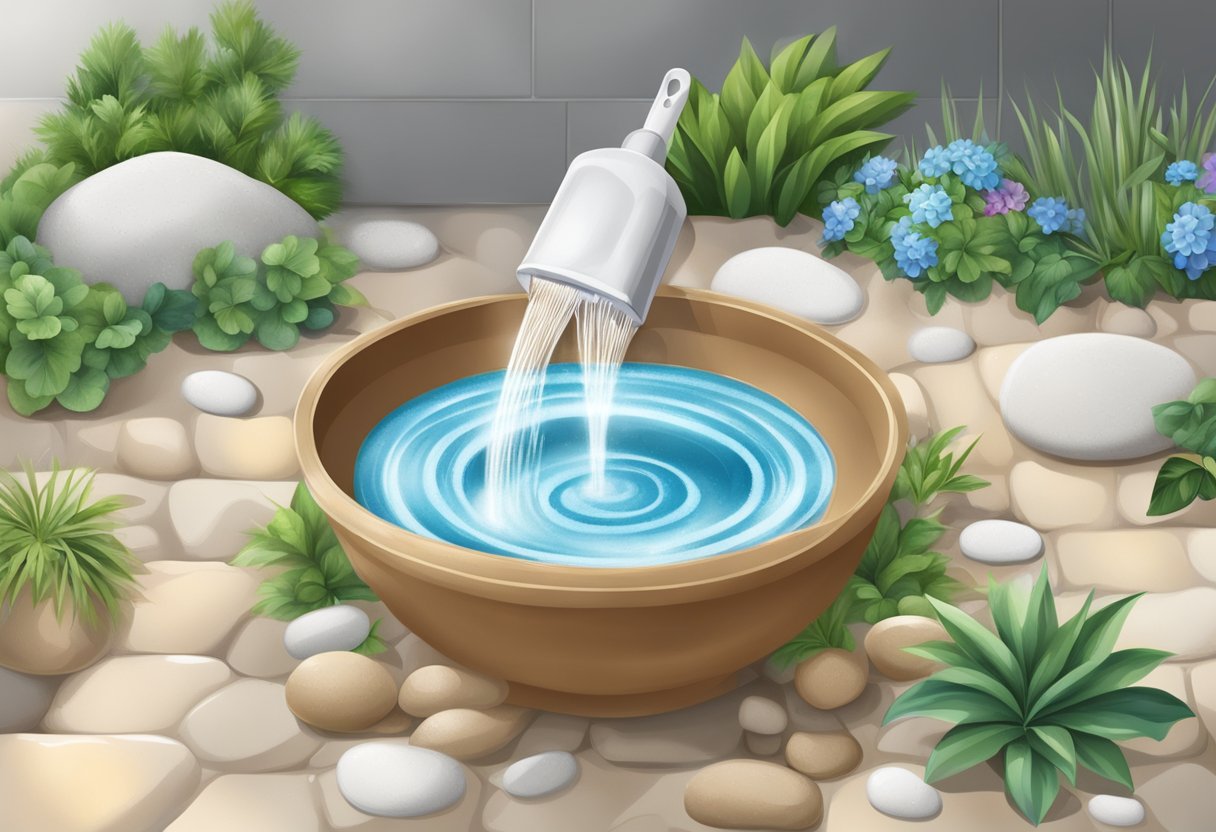White garden pebbles are a popular choice for enhancing the aesthetic appeal of landscaping and outdoor spaces, offering a striking contrast with the surrounding greenery and blooms. Prized for their clean, crisp appearance, these decorative aggregates can, however, lose their vibrancy due to dirt, moss, and algae, undermining the overall beauty of a home’s garden or backyard. Restoring their brightness is not just about visual appeal but also about maintaining the health of the outdoor space, as accumulated dirt can house unwanted pests and bacteria.

To ensure these garden stones retain their decorative charm, periodic cleaning is essential. It’s a straightforward process that can make a significant difference in the appearance of your outdoor space. I’ve discovered that regular maintenance not only keeps them looking pristine but also preserves their quality over time, preventing them from becoming buried under soil or discolored beyond repair.
JUMP TO TOPIC
Effective Cleaning Techniques for Garden Stones and Pebbles
Cleaning garden stones and pebbles is straightforward when you have the right tools and solutions, and understanding the specific type and level of debris you’re dealing with helps ensure they look as good as new.
Assessing the Type and Level of Debris
Before I start any cleaning project, I inspect the pebbles to determine how much dirt buildup is present. This includes looking out for mud, fallen leaves, twigs, and unmoving debris like stains or moss.
Tools for Removing Organic Debris
Leaves, twigs, and other organic matter can be removed using a garden rake or broom. For smaller particles, a sieve works wonders. If the debris is spread over a large area, a leaf blower can save time and effort. Here’s how I equip myself:
- Garden rake: For gathering large pieces of organic debris.
- Leaf blower: Perfect for clearing large areas efficiently.
- Sieve: Ideal for separating pebbles from smaller particles like dust or dirt.
Choosing Appropriate Cleaning Solutions
For cleaning garden pebbles, I avoid harsh chemicals that may harm plant life or erode the stones. A solution of mild dish soap and warm water is usually sufficient for general cleaning. For more stubborn dirt, a mixture of white vinegar and water works due to its acidic properties which can help remove tough stains and algae growth. When dealing with garden pebbles, I sometimes use a bleach solution for whitening, but this requires careful handling and proper dilution. Gloves are a must for protection.
💥 Key Cleaning Solutions
- Mild dish soap and water: For gentle cleaning of pebbles.
- White vinegar and water: To tackle stains, moss, and algae growth.
- Bucket of diluted bleach: For whitening pebbles, ensuring gloves are worn for safety.
Maintaining Pristine Paths and Patios
Maintaining the look and cleanliness of garden paths and patios is paramount for an inviting outdoor space. Different stone types, such as limestone, granite, and marble, require their specific care routine, but general methods apply for keeping white garden pebbles and similar materials in top condition.
Routine Cleaning and Stain Prevention
Regularly rinsing the area with a high-pressure garden hose helps to wash away any residue and keeps the pebbles looking fresh. For areas with high foot traffic, a more frequent cleaning schedule is beneficial to maintain their aesthetic appeal.
Tackling Stubborn Stains and Algae
I have found that for stubborn stains, creating a paste of baking soda and water is particularly effective. I apply this paste with an old toothbrush to spots that need extra attention and rinse thoroughly after scrubbing.
💥 Algae Growth: For algae or moss, which can be common in shady areas, I apply a solution of one-part white vinegar to two parts water and leave it to soak on the affected stones before rinsing. This helps restore their natural beauty without harming the surrounding plant life.
If I’m dealing with particularly porous stones, like slate chippings or slate monoliths, I prefer to use gentler cleaning methods to avoid damaging their delicate structure. For these, a diluted bleach solution can be effective, but I ensure to rinse the stones thoroughly afterwards to prevent any bleach residue from affecting my yard’s ecosystem. It’s essential to let all types of stones dry completely, ideally in the wind and sun, to prevent moisture from lingering and potentially causing new stains or algae growth.
Garden Weed and Moss Control
Effective management of garden weeds and moss can enhance the beauty of your white garden pebbles, preventing them from being overshadowed by unwanted growth.
Natural and Chemical Methods for Weed Removal
I find that combining natural and chemical approaches is efficient for tackling garden weeds. Here’s what has worked for me:
- Boiling water: Pouring it directly on weeds can kill them instantly, but be careful not to harm surrounding plants.
- Mulching: Using organic mulch not only suppresses weeds but also improves soil quality.
- Vinegar: High-acidity vinegar can act as a natural herbicide. It works best on a sunny day.
Chemical options should be a last resort due to potential environmental impact, and I always use them responsibly:
- Herbicides: I select targeted herbicides designed to kill specific weed types without affecting other plants.
- Weed killers: Non-selective weed killers can clear large areas but will kill all vegetation they come into contact with.
Preventative Strategies for Weed and Moss Growth
For preventing weed and moss growth, I’ve adopted several strategies that really keep my garden pebbles clear:
- Weed prevention membrane: Installing this before laying the pebbles significantly reduces weed emergence.
- Regular cleaning: I schedule frequent removal of organic debris, which discourages weed and moss growth.
- Landscape design: Thoughtful placement of large landscaping rocks and plants minimizes bare spots where weeds thrive.
- Water management: I ensure proper drainage as standing water can promote weed and algae growth.












